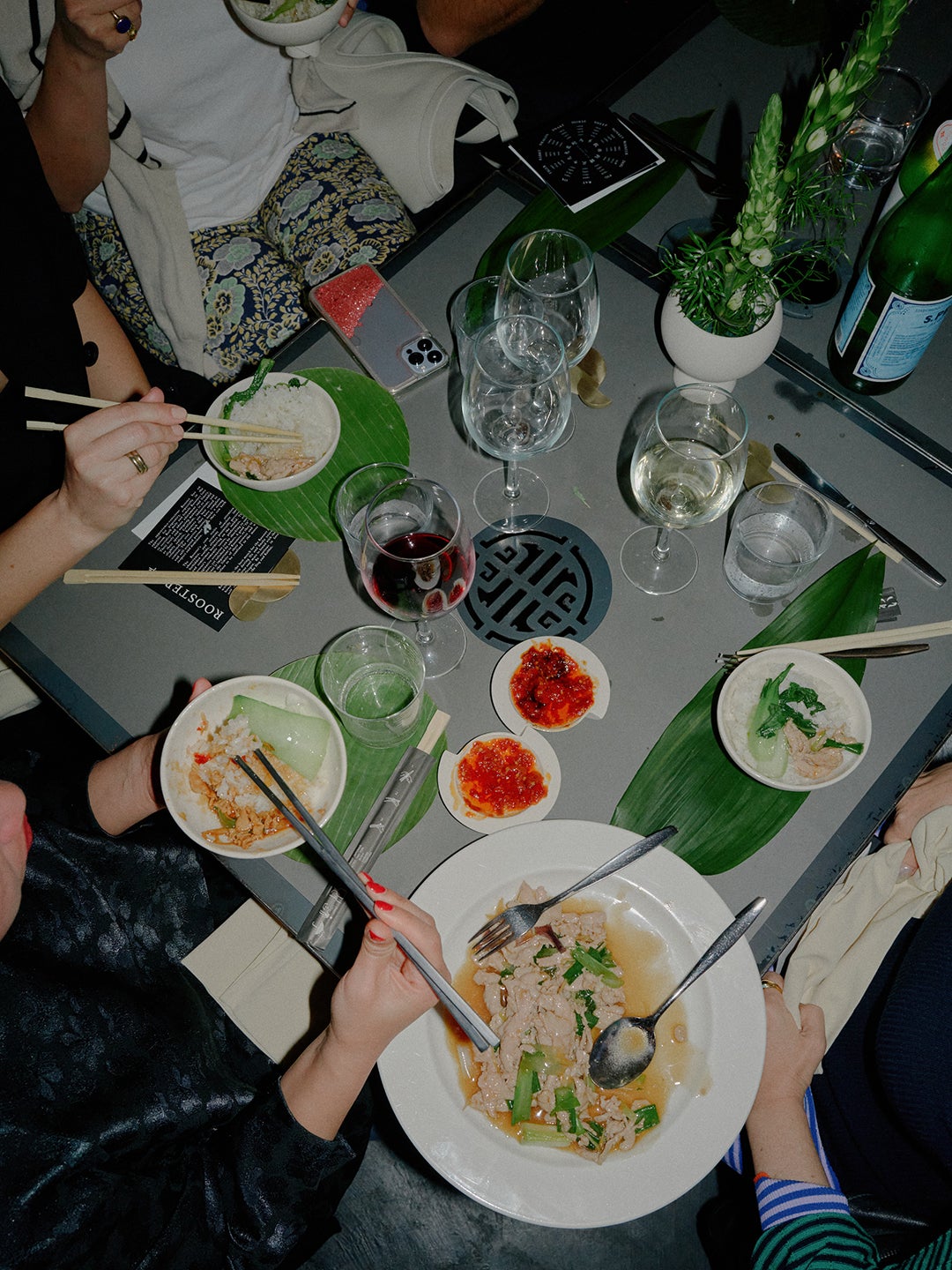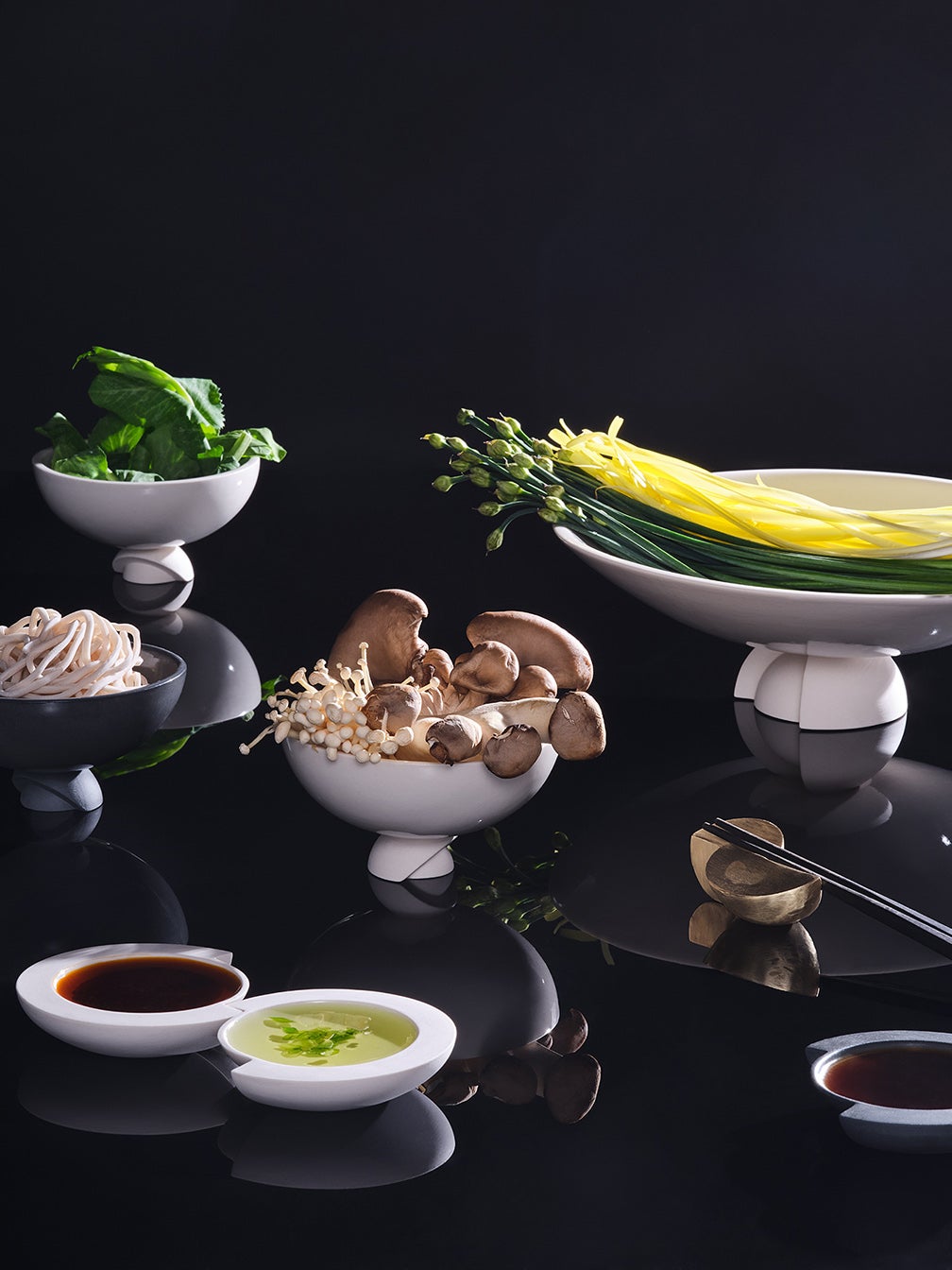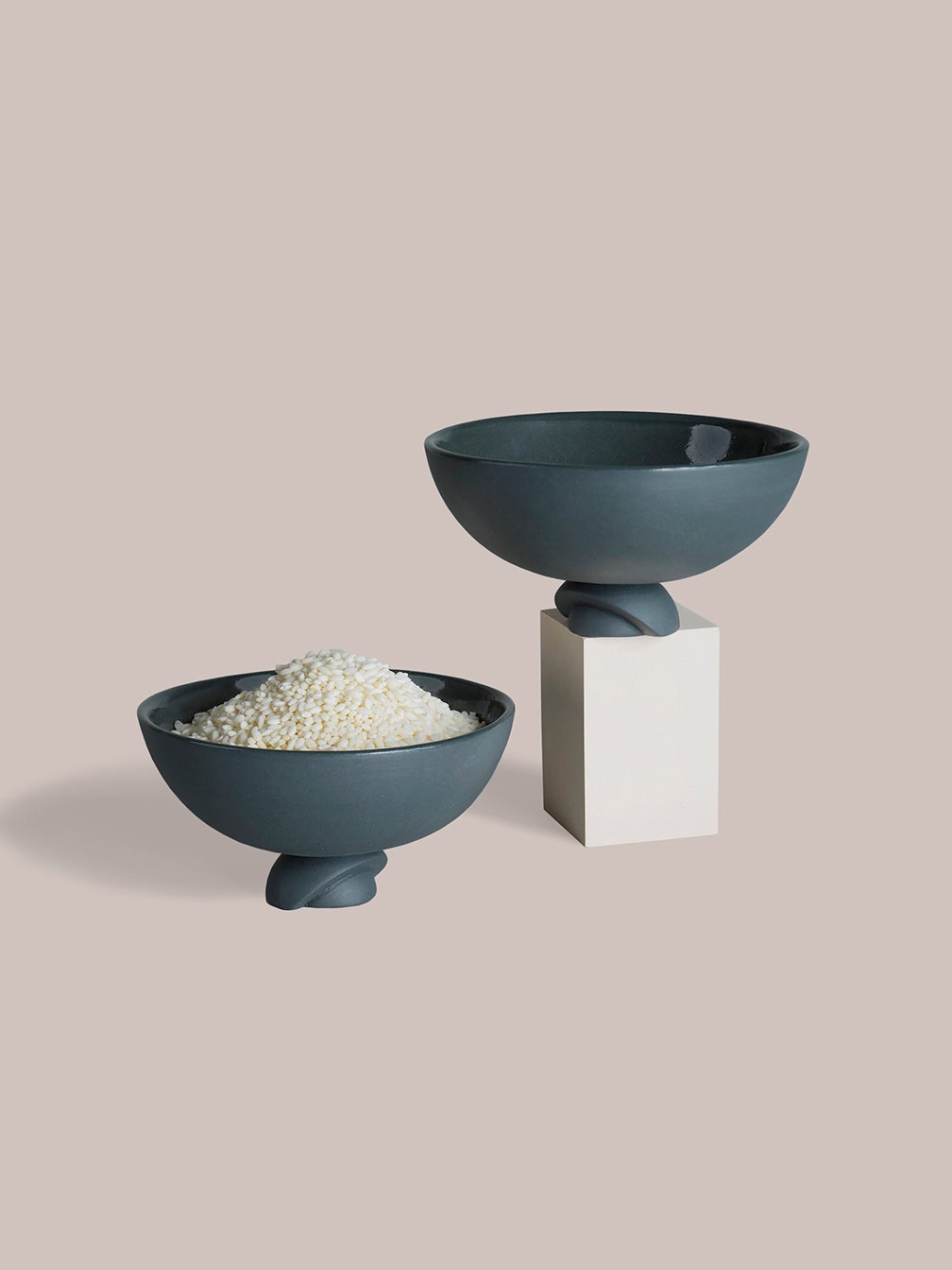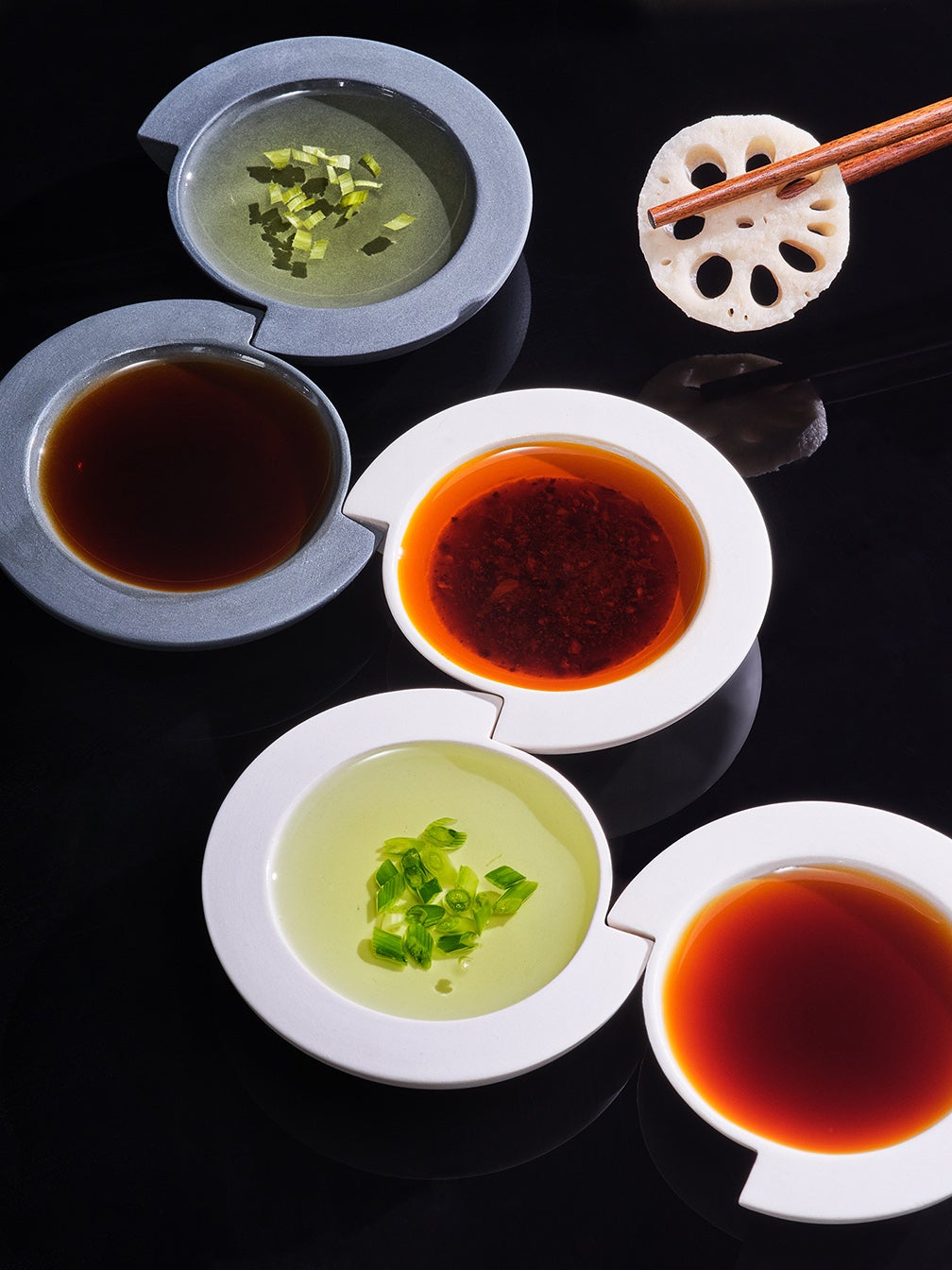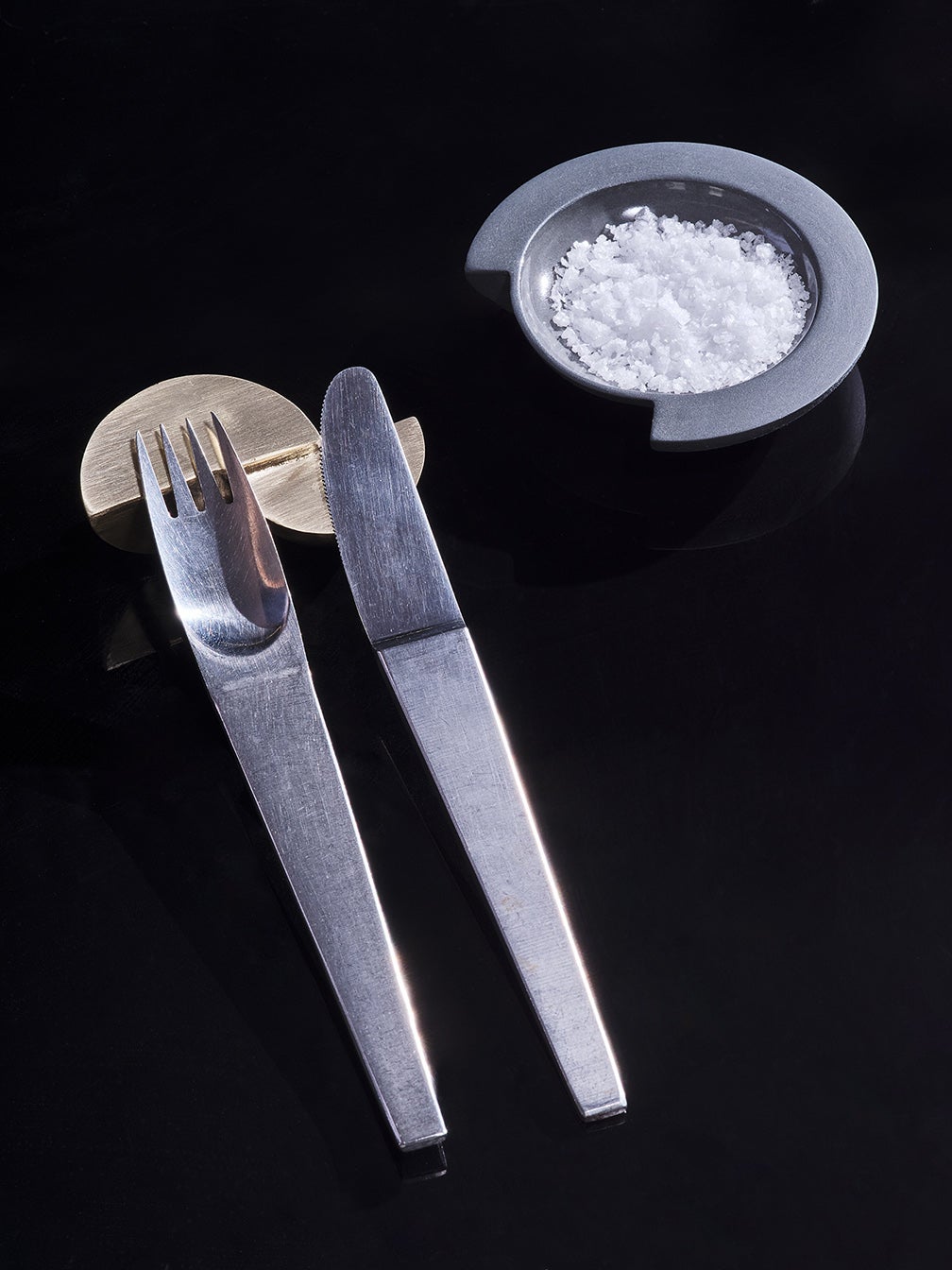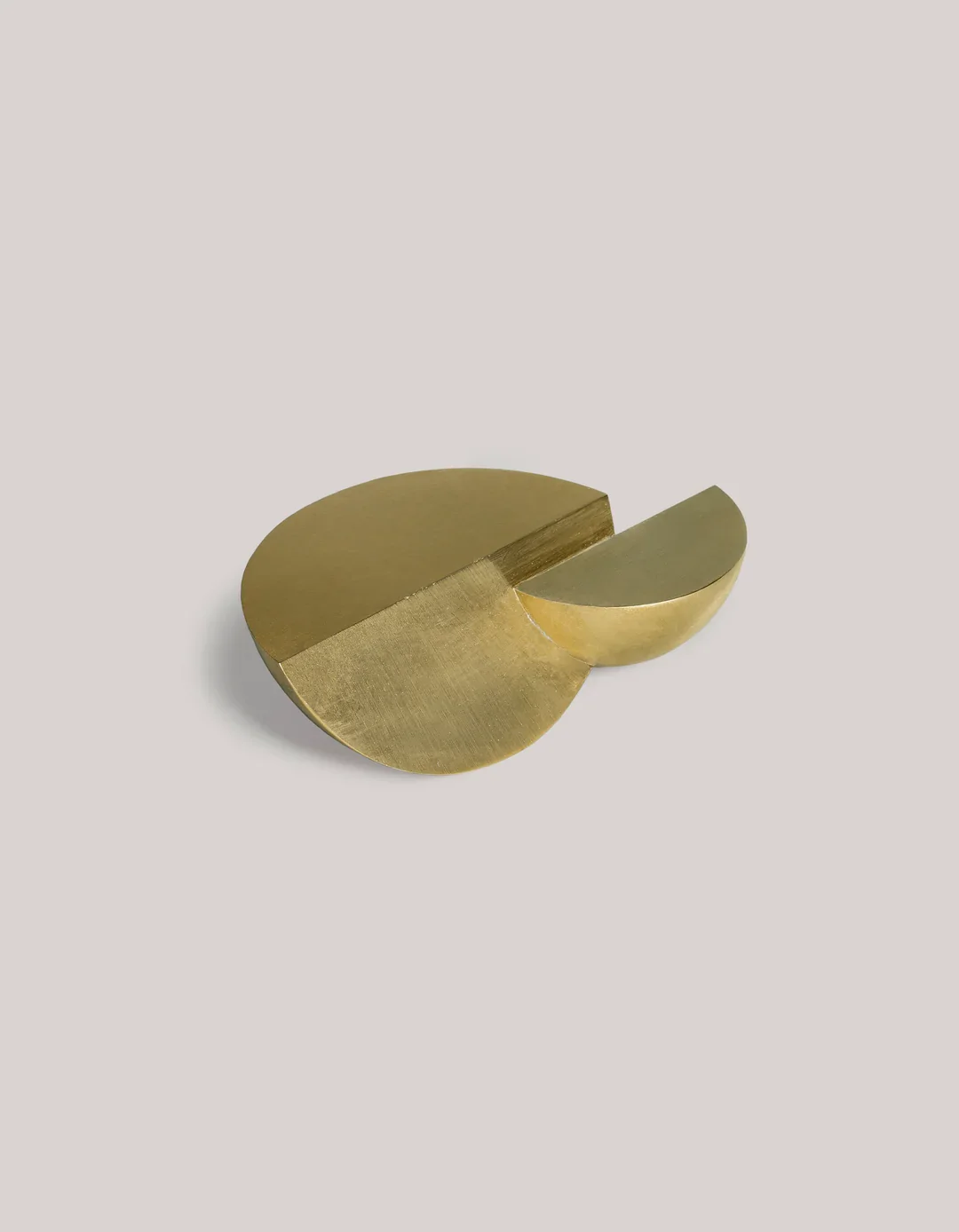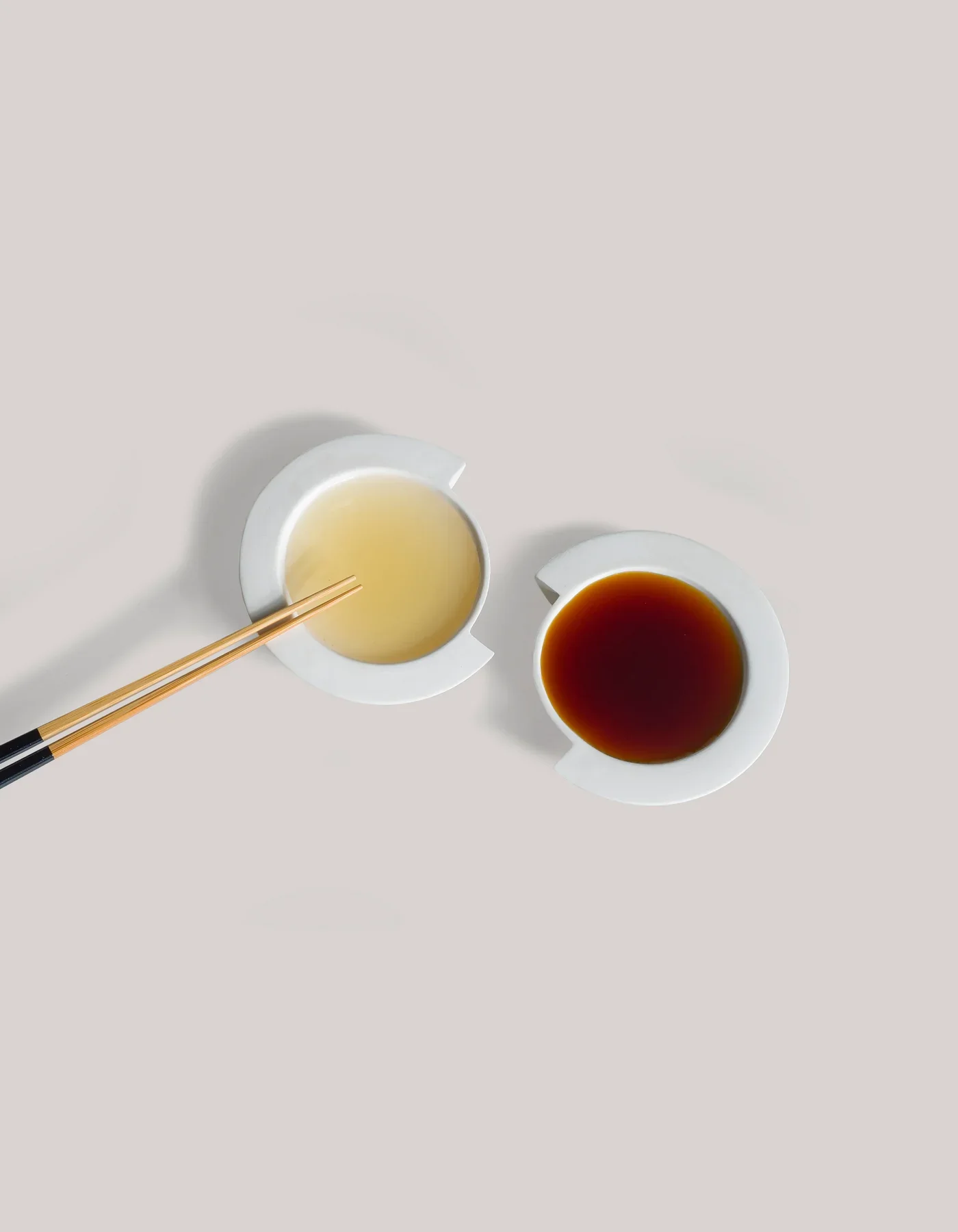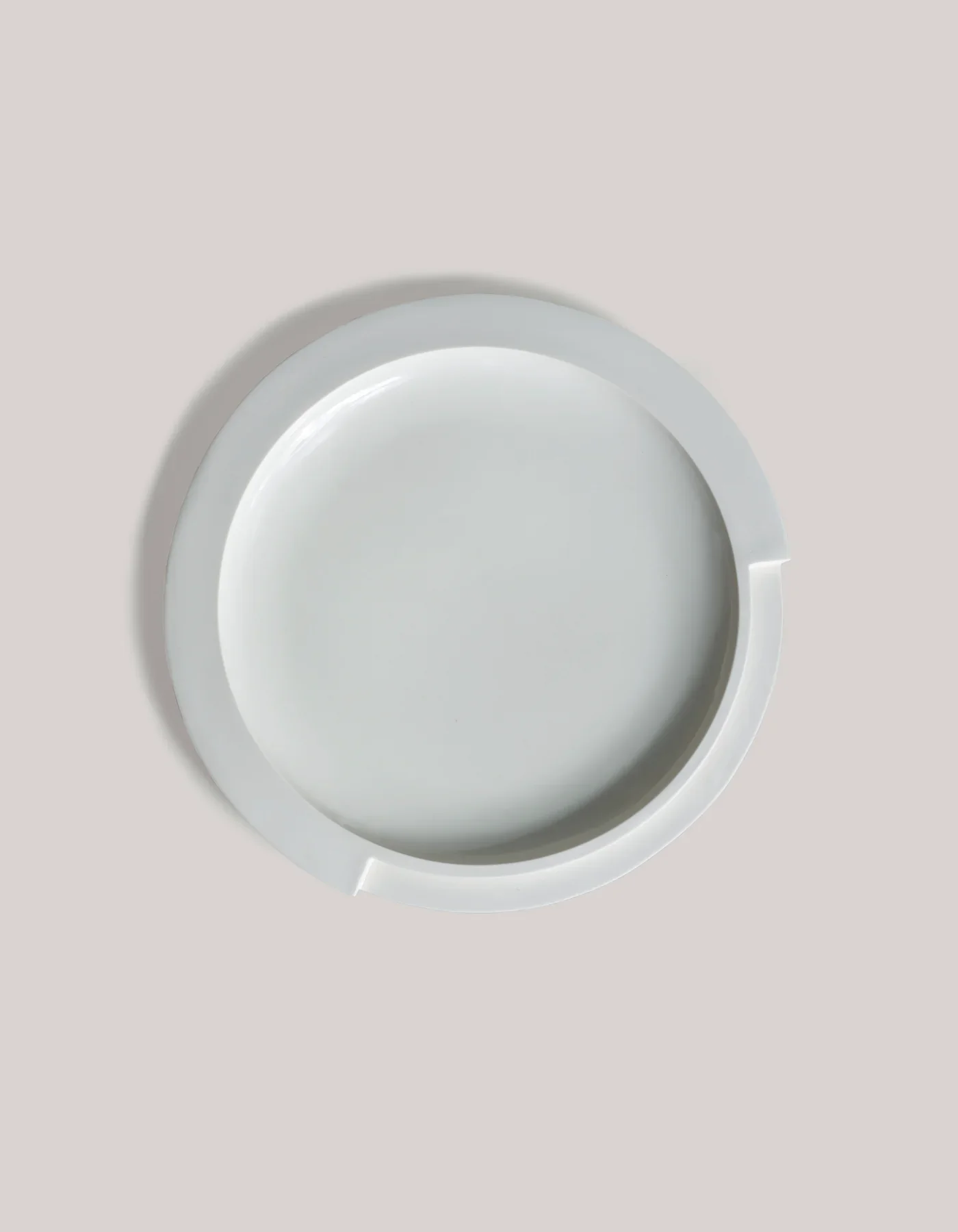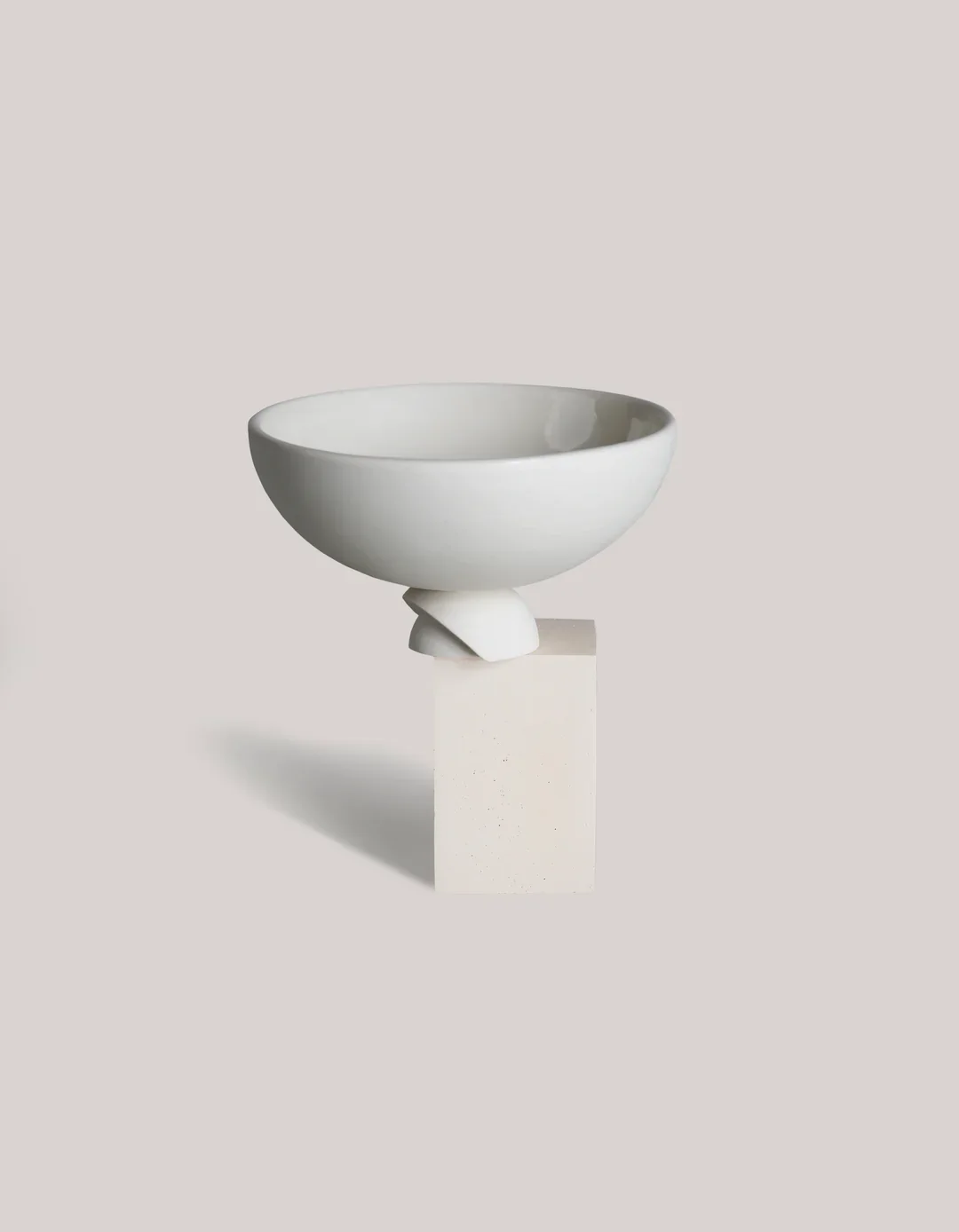We may earn revenue from the products available on this page and participate in affiliate programs.
When Tortuga Forma founder Andrea Hill and Light + Ladder designer Farrah Sit welcomed guests to a meal at Milan’s oldest Chinese restaurant last month, they purposefully nixed the dinner plates. Instead, they gave everyone a rice bowl. “Farrah and I wanted to communicate the love and nourishment that we personally feel when consuming Chinese food [at home],” says Hill. “Our friends loved the sensation of holding this warm, small bowl and putting it to their lips.”
But it wasn’t just any ordinary rice bowl—it was one they collaborated on as part of Tortuga’s just-launched Kaolin collection. The assortment, which spans solid brass utensil holders, modular sauce containers, and more, is a modern take on Asian tableware, inspired by conversations between the two creatives about their shared cultural heritage as first-generation Chinese Americans. This week, Domino’s chief creative officer, Kate Berry, entered the chat. Berry, who immigrated with her family to the U.S. from Vietnam when she was 15 months old, sat down with Hill to talk about setting the table, comfort food, and celebrating your roots.
This collection was sparked by a conversation between you and Farrah about your shared backgrounds. What were some of those moments you two spoke about?
I told Farrah about my love for hosting small and large (and often messy) dinner parties and bringing our community around a table. Farrah then shared her experience growing up in Hudson Valley’s oldest Chinese restaurant, owned by her family. We compared notes over the different experiences of eating Chinese food at home versus at a restaurant, and it became clear that we wanted to bring the comfort and pleasure of the home-cooked Asian meal to life.
What role did the rice bowl play (and still plays) at your dinner table?
I love nothing more than freshly steamed rice and have at least five different varieties in my pantry. The rice bowl is the singular vessel that can carry an Asian meal from beginning to end: It is a dining plate, appetizer plate, and soup bowl.
I love how you’ve taken the humble rice bowl and put it on a pedestal; honoring it in that way.
It’s exactly what we are trying to do. We wanted to make the most beautiful rice bowl anyone could ever imagine. It can hold so many things, but we wanted to call it the rice bowl because that particular grain is so essential to all Asian cuisine.
The collection is made with a custom porcelain clay. How and why did you customize the material?
Porcelain is a historically important material in the history of tableware. The collection name Kaolin comes from the mountain range in China where the white silicate clay was traditionally mined. Our pieces are made in Vermont at an artisanal workshop. The makers are true artists and developed a custom clay mix that performs well in the mold and fires to a beautiful white color. I love that porcelain became synonymous and interchangeable with China because of the highest quality of porcelain coming from the country.
For people who might not typically make Asian cuisine, how do you imagine them using the collection and integrating it into their tablescape?
The Kaolin collection was designed to honor Asian cuisine, but the forms are universal and open to all foods. The footed serve bowl holds fruit as elegantly as vermicelli noodles. The serve platter is perfect for roast chicken or a whole steamed ginger scallion fish. The rice bowl is a perfect container for yogurt with granola. The sauce dishes also want to hold dips and snacks. Depending on orientation, the solid brass utensil holder can balance chopsticks or a knife-and-fork set.
My culture is so much about gathering, and I think it’s very universal for all Asian cultures, right?
Food is the language of love in all Asian cultures. I don’t know if you experienced this, but with my family, they never told me they loved me. They just always asked me if I was hungry.
That is so right. I say “I love you” so much to my daughter, but it’s that same thing where I’m like, “Can you please eat this? Please, for me.”
We’re always trying to work against this monolithic view of Asian culture and cuisine across the board. I hope one thing that comes from this collection is hearing how other Asian cultures eat. So I’m curious, what were the main dishes in your household growing up?
We always had broth-y soup with a protein. My parents would start cooking pho broth on Friday, and we’d have it the next morning and throughout the whole weekend. We still gather at my brother’s house, and my mom will make bò kho, which is like a curry beef stew. We’ll make fun dishes like bánh xèo—the Vietnamese crepe. A lot of Vietnamese dishes are influenced by French cooking.
Do you cook Vietnamese food?
My parents divorced when I was young, so my mom didn’t really have an opportunity to teach me how to cook. It wasn’t until I moved to New York that I started cooking [it].
I’ve never made pho broth.
Let’s try it together one day. I remember [as a kid] not wanting to eat a type of food because, oh, “it’s going to smell” or “people are going to judge me.” You just want to be normal. But now I feel like we’ve arrived.
It took a lot of painful shared moments to get here. I’ve never thought more about identity than I have these past three years.
You and I spoke recently about becoming more comfortable around talking about our cultures. I think a lot of creativity comes out of that.
For both Farrah and me, it was an uncomfortable process revealing parts of [ourselves]. I think all of us grew up in this way, where we wanted to be recognized as individuals in spite of being minorities; it was the “in spite of” that was the challenge. But there is comfort when you realize, let’s not hide these things. Let’s take them out of the cupboard. Let’s put them on the table. Let’s celebrate them.
Shop the Collection
The post “The Most Beautiful Rice Bowl Anyone Could Ever Imagine” Honors the Pleasures of Asian Home Cooking appeared first on domino.


